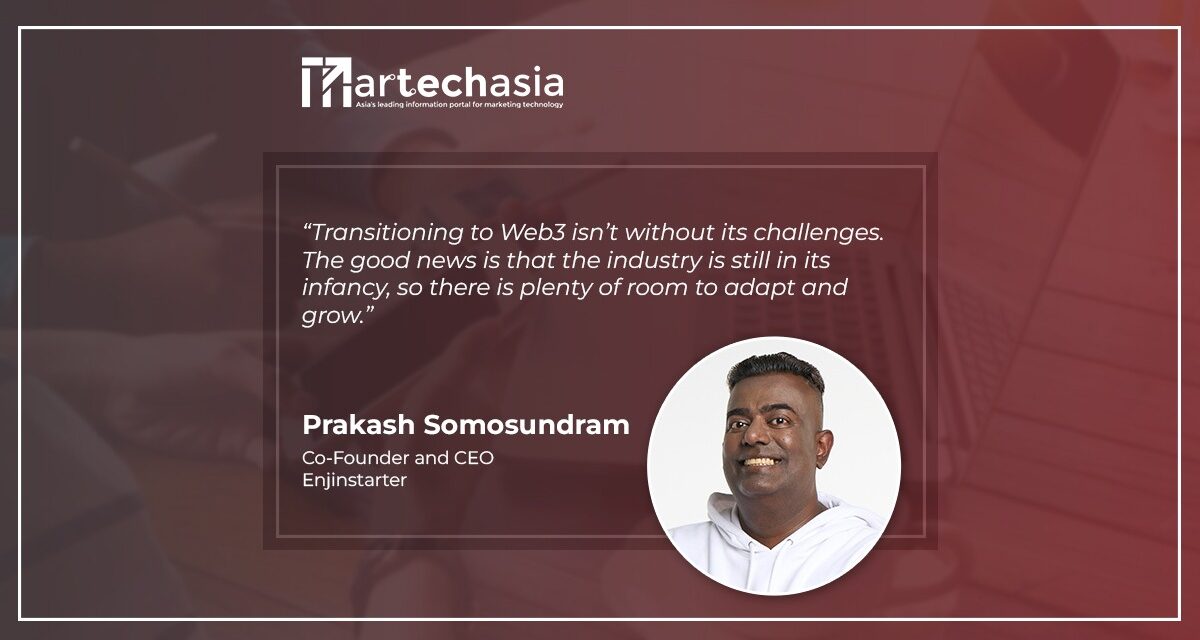With the Web3 market set to reach US$81 billion by 2030 and global brands such as Nike and Tiger embracing the metaverse and NFTs, people working in traditional marketing agencies have reached a crossroads: climb aboard the Web3 train or remain at the station?
It was around this time last year that I had reached a crossroads of my own. The NFT market was in the midst of a boom, brands were beginning to enter the metaverse, and blockchain gaming was nearing its peak behind the popularity of Axie Infinity. The possibilities seemed endless, and yet, the hesitation was real. If you were already involved in the space then, kudos to you for being the tip of the spear.
On the contrary, traditional marketing felt stagnant. Aside from perhaps TikTok, it had been a long time since we had seen any sort of paradigm shift. Not to say we weren’t good at what we did, but rather we had been doing it for too long. I, for one, needed something new; something aligned with the shift in consumer behaviour that was inching ever closer. What I needed was Web3.
Fast forward to today and I can tell you the decision to transition from the prevailing and hierarchical Web2 mindset to a community-based Web3 incubator and ecosystem builder was indeed a challenging one. Through my experience over the past year, I hope to use this article to make life easier for marketers wondering whether they should make the same leap.
.jpeg)
Web2 vs. Web3, for marketers
When we talk about Web2 marketing, we’re talking about an approach predicated on getting people into funnels, then implementing strategies to convert them into paying customers. Whether that funnel is a landing page or an in-store activation, the focus is the same: highlight the product or service and its benefits. Success is then measured in terms of conversions and recurring revenue.
Web3, in stark contrast, flips this paradigm on its head. Its philosophy encourages community-first thinking. In other words, start with a community built around an idea, then realise that idea with input and governance from the community. From a marketing standpoint, instead of thinking “Why would someone buy the product?”, consider: “Why would someone join and contribute to a community?” At the end of the day, marketers need to prioritise the value of long-term community engagement over that of the product.
Community focus, experiential marketing
Digging a little deeper, Web3 is ushering out the traditional top-down, centralised approach to everything we do. Metaverses, for example, far from being centrally-controlled entities, are community-governed and radically transparent by design. They are also platforms that allow brands to build and engage communities of their own. At the same time, the proliferation of metaverses and NFTs has expanded the possibilities of experiential marketing. Brands can now deliver digital experiences to anyone anywhere, while unlocking a near-infinite number of cross-promotional opportunities.
Look no further than tourism for a use case. Beyond simply enabling the creation of a virtual city or attraction, metaverses can help tourism authorities engage people across the world, regardless of whether they intend to travel to the country or not. NFTs, in turn, can be used to reward the most active members of the community. A discount on a hotel room or access to an attraction, to name but a few examples. Perhaps most importantly, this kind of engagement can lead to long-term tourism relationships.
Web2 skills, Web3 value
It’s worth noting that many of the skills honed by traditional marketers over the years are completely transferable to Web3. Psychology still plays a primary role in community-first thinking, while aesthetics and content remain critical to metaverse-based experiential marketing.
What has changed are the tools. Discord is now the service of choice for two-way communication between brands and their communities. Metaverses represent a new frontier for brand engagement and product development. NFTs enable the creation of new value chains and utility. Web2 marketers can bring their depth of experience to these new tools and develop opportunities to leverage them in ways not yet seen.
I encourage marketers to look at this transition as an upgrade, not a foundational change. It’s about surveying the landscape and figuring out how their skillset can add value to Web3. When they start looking into it, my guess is they’ll be surprised at just how much overlap there is.
Making the leap
Transitioning to Web3 isn’t without its challenges. The good news is that the industry is still in its infancy, so there is plenty of room to adapt and grow. What we know for sure is that Web3 is in need of professional marketers who have already adopted the new tools of the trade, both to serve Web2 brands clamouring to integrate Web3 and Web3 startups scaling rapidly. They would all benefit from professional expertise, both in terms of strategy and implementation.
For those who don’t want to make a complete transition, there exists a golden opportunity for agencies and in-house teams to begin building Web3 capabilities. Because, as it stands now, a marketing pitch would be remiss if it didn’t contain some level of Web3 integration. This is the new world we live in, so we better start getting used to it. Looking back at the decision I made, I can’t help but think it was the right one. If I have learned anything over the past year, it’s that community-first thinking, metaverse-level brand engagement, and NFT-based everything are here to stay. Some of the brightest minds in Web2 and Web3 are figuring out how to leverage this new paradigm shift to their advantage. It’s high time marketers and their agencies start thinking about the same transition.



















